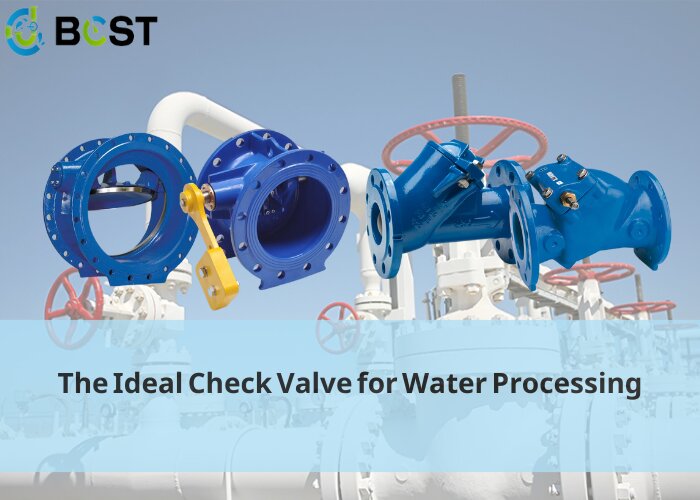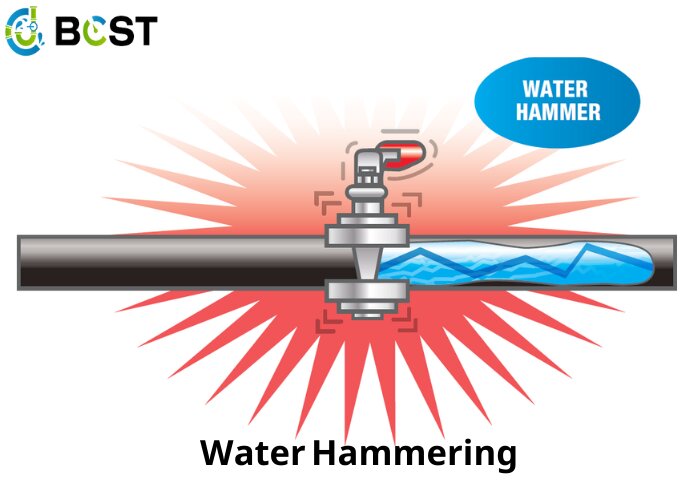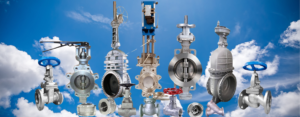
In the intricate world of water processing, where efficiency and reliability are paramount, the role of a seemingly modest yet crucial component cannot be overstated—the check valve. As water journeys through various treatment, purification, and distribution stages, a reliable mechanism to control the flow and prevent back flow becomes imperative.
Imagine a scenario where water, having undergone meticulous treatment, encounters an obstacle that compromises its quality or disrupts the smooth progression through the system. This is where the perfect check valve steps in, serving as the unsung hero in ensuring seamless water flow throughout the processing journey.
Join us on a journey through the intricacies of water processing and discover why the perfect check valve is not just a component but a cornerstone in the quest for clean, safe, and efficiently processed water.
Problems with Transporting Water
§ Water Hammering:

While this hydraulic phenomenon can be observed in other liquids, water hammering happens when a media suddenly stops or changes direction. As the water or other media is trapped within the pipeline with only two directions to travel, this occurrence comes with a vibration in the line and, very often, a loud noise. Both can spell damage. Transporting water is a commonplace event in our world, with numerous applications. Still, it remains a tricky job today, as maintaining a steady flow rate indefinitely is almost impossible. The most common cause of water hammering is when a pump stops suddenly. Water reverses, traveling backward toward the pump because the check valve could not close fast enough. A water hammer is sometimes called a water slam.
§ Reverse Flow:
An unchecked, reverse flow of water (or any media) can cause a pump to spin backward, causing irreparable damage. Also, when water travels in the wrong direction at any time, it can cause severe damage throughout an entire distribution system. Unlike a backflow preventer, which consists of multiple check valves that work together, a single check valve is not always foolproof. Reverse flow can and does happen.
§ Valve chatter:
Valve chatter is the continuous and frequent opening and closing of a valve. Valve chatter can cause damage to the valve and the line and lead to total failure.
Checking the Problems with Water
While check valves are incredibly dependable, and newer, better, and more innovative models come out yearly, they all seek to prevent the three problems listed above. Due to their simplicity, check valves will work regardless of outside factors–such as a power failure–but are still subject to the direction of flow and check valve design characteristics and/or flaws.
There are two basic designs for check valves. One makes use of a disk (essentially a flap), while the other makes use of a free-floating ball. They are all singular-directional, meaning they aim to prevent water from flowing backward through a line or system. Both types present pros and cons but perform the same job with relatively equal success (though manufacturers of one design or the other may seek to prove otherwise). In the end, however, a check valve’s success depends on an action that is fast enough but not too slow, which can lead to water hammering or backflow. Valve chatter is also due to the common mistake of oversizing- just because a valve fits doesn’t mean it is appropriate for the application. Finally, like other valves, the success of a check valve is determined by how well it seals. When selecting a check valve, all of these factors should be taken into account.

Final Thoughts
In water processing, where the quest for efficiency and reliability reign supreme, check valves emerge as the unsung heroes, addressing critical challenges in the seamless water flow. In our exploration of intricate progress in sewage treatment and water delivery, we know that the perfect check valve plays an indispensable role.
However, the journey doesn’t end here. We will meet various challenges in the progress of water delivery, including Hammering, backflow, and valve chattering. These problems will threaten the whole water processing system. result in damage, low efficiency, and potential failures.
Water hammering, often associated with sudden stops or changes in direction, can cause vibrations and noise, resulting in significant damage. Reverse flow poses the risk of pump damage and system-wide harm, emphasizing the importance of effective check valves. Valve chatter, a consequence of constant and frequent valve opening and closing, further underscores the need for precision in check valve design.
With their simplicity and reliability, check valves offer solutions to these challenges. Whether utilizing a disc or a free-floating ball design, check valves prevent backflow and contribute to the overall stability of water processing systems. However, it’s crucial to consider factors such as the speed of action, appropriate sizing, and effective sealing when selecting the suitable check valve for a specific application.
The perfect check valve is not only a component but also an important element of intricate dance in the progress of the water fixing system. With the development of the technology and innovations. The pursuit of an ideal check valve still goes on, to make sure that the water flows seamlessly, efficiently, and without compromise through the various stages of treatment and distribution. In the ongoing progress of pursuing clean and safe water, the wonderful check valve is still a cornerstone, playing a protective role in the intricate water-fixing world.






